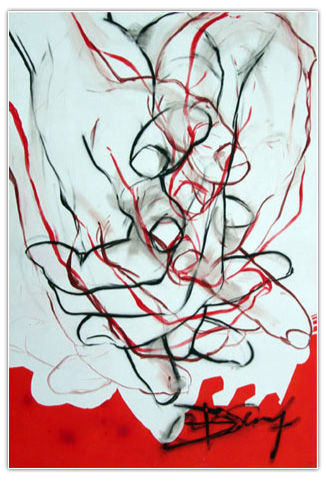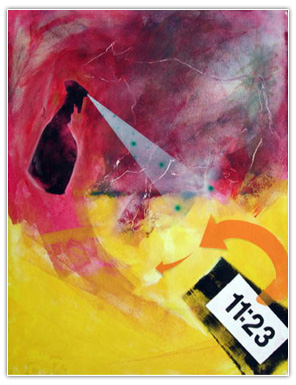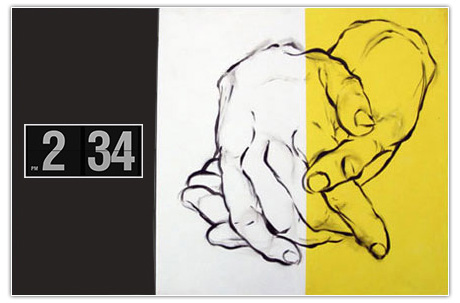The problems would focus on
- Strategies for identifying and exploiting sources of research in response to set problems.
- Approaches to the gathering, organising and responding to primary and secondary research.
- The development of visual solutions to problems through the investigation of format, function, audience and context.
The investigation will look at the development of ideas through appropriate forms of documentation and recording.
To begin the brief we were categorised into groups of 5 and were given one word.
I am in group 1 and we had to explore the means of 'Routine'. As a group we brainstormed the definition of routine : "A prescribed, detailed course of action to be followed regularly; a standard procedure." Source
After clarifying it's meaning we then looked into different routines that people may experience and came up with these idea's.
I am in group 1 and we had to explore the means of 'Routine'. As a group we brainstormed the definition of routine : "A prescribed, detailed course of action to be followed regularly; a standard procedure." Source
After clarifying it's meaning we then looked into different routines that people may experience and came up with these idea's.
After debating our idea's we then assigned ourselves to a particular theme and I chose to look into OCD - Obsessive compulsive disorder, which is a mental health condition where people have to carry out various routines to feel comfortable or safe.
I then began to brainstorm idea's of what I could research and look into about the issue to gain a better understanding.
After identifying the routes I could look into, I began looking at primary, then secondary research until I found a direction.
PRIMARY RESEARCH
PRIMARY RESEARCH
To begin the primary research of the investigation into OCD, I sourced and edited a questionnaire that allocated different areas of obsessive behaviour people might experience. I asked 10 people from a range of ages and backgrounds to see if they had similar issues or infact had OCD. I emailed students, social workers and the general public.
THE RESULTS
From my results I found that 10 out of the 10 people I asked had 1 or more symptoms of OCD. I found these results staggering as I didn't think it affected many people.
PRIMARY RESEARCH BOARD
This board was created to present to the peers in my group.

From the results of the research I was then prompted to research the severity of the condition, the different types of the condition and how many people in the UK it affected.
SECONDARY RESEARCH
To start my research I wanted to find out the facts and figures of how many people the condition affected. 'Obsessive–Compulsive Disorder (OCD) is a serious anxiety-related condition where a person experiences frequent intrusive and unwelcome obsessional thoughts, often followed by repetitive compulsions, impulses or urges.

To start my research I wanted to find out the facts and figures of how many people the condition affected. 'Obsessive–Compulsive Disorder (OCD) is a serious anxiety-related condition where a person experiences frequent intrusive and unwelcome obsessional thoughts, often followed by repetitive compulsions, impulses or urges.
The illness affects as many as 12 in every 1000 people (1.2% of the population) from young children to adults, regardless of gender or social or cultural background.
Based on current estimates for the UK population, there are potentially around 741,504 people living with OCD at any one time. But it is worth noting that a disproportionately high number, 50% of all these cases, will fall into the severe category, with less than a quarter being classed as mild cases. ' - OCD UK.
I also looked at peoples personal accounts and their experiences with OCD. The video showed that there were different types of repetitive compulsions that people suffered from, which I wanted to explore further what they are and what caused them.

A cycle of the process of thought that people with OCD face, that triggers the brain to work out the rituals and routines they use.
I found from my research that people can suffer from different dimension of OCD from
I found from my research that people can suffer from different dimension of OCD from
- Hoarding
- Arranging, counting, repeating and symmetry
- Washing, cleaning and contamination
- Obsessive thoughts
Sometimes multiple dimensions in serious cases.
To gain a better understanding of the condition I watched a documentary on people with OCD on channel 4, hosted by Jon Richardson who suffers also from the condition. The documentary looks into the obsessions and routines people experience with the mental health issue. It also shows an interesting insight into how people think and how the simplest of tasks can either frustrate or calm them down.
Jon Richardson also had another BBC 3 TV series called "Different Like Me?" which explored the general public's personal habits and obsessive routines that took over their daily lives. One of the participants would spend up to 10 hours a day cleaning his car and spent over 2000 pounds on cleaning materials that had to be organised in a certain way to prevent anxiety.
I found out from the documentaries that a main issue with OCD, is how things visually look and how they are presented. The Arranging, counting, repeating and symmetry aspect of OCD then lead me to look at how people with the condition visually expressed themselves.
VISUAL RESEARCH
I wanted to see how OCD was visually represented not only by people with it but interpretations by artists A main factor of the condition is how they present certain things in order to feel calm.
I wanted to see how OCD was visually represented not only by people with it but interpretations by artists A main factor of the condition is how they present certain things in order to feel calm.
"Chaos and disorder are ubiquitous, force to organize ourselves and clean space in an endless struggle against entropy. Or, set to a positive spin on the same concept: organization is perhaps a way to control and to understand the world around us." - Source



A collection of fine arts pieces by Dennis Ryan which are based upon the concepts of OCD through; isolation, loneliness , time consumption, hand washing and faith. These are all elements that are experienced through mental health and are presented in an interesting and abstract way.






Source

Manchester artist Sarah Mcreedy, focuses on the obsessive thoughts that enter the mind of someone with OCD in a stylistic way. The artist works with different camera lenses to focus on how a person with the condition would think.



Photography of the arrangement of food in a highly organised matter and structure resembling the symptoms of OCD.




These are images of appliances constructed into a particular order to represent the behaviour of OCD.
A short and stylistic film on how people with OCD face there everyday life, by Abi Draper & Stephen Cradduck.

A dimension of OCD is cleaning, this is a photographic representation of a hand washing routine to avoid contamination.

One of the dimensions of OCD is hoarding, where people can't throw away items due to attachment issues. I watched an episode of the Hoarders TV series and the condition in server cases can kill the person due to unhygienic reasons.

One of the dimensions of OCD is hoarding, where people can't throw away items due to attachment issues. I watched an episode of the Hoarders TV series and the condition in server cases can kill the person due to unhygienic reasons.
SECONDARY RESEARCH BOARD
This board was created to present to the peers in my group.

From the research collated I realised there was a lot of issues, habits and routines people faced. After looking at all the statics and visual representations of OCD I began to allocate what was most relevant, popular and interesting to develop the direction of my research. When referring back to my primary research I found that the some of the most common dimension of OCD where found in the ordering, checking and repeating.
DESIGN DIRECTION
After finding the most common form of OCD from my primary research and secondary research I decided to focus on that as the direction of my work.
DESIGN DIRECTION BOARD
This design direction board was created to present to the peers in my group from the findings I had found.
This design direction board was created to present to the peers in my group from the findings I had found.
I decided to choose this theme as it was something I found interest in visually. I also was influenced by the results of my survey and the extent to which the condition affected people.

.JPG)
























Nice post. Well, what can I say is that these is an interesting and very informative topic on OCD
ReplyDelete